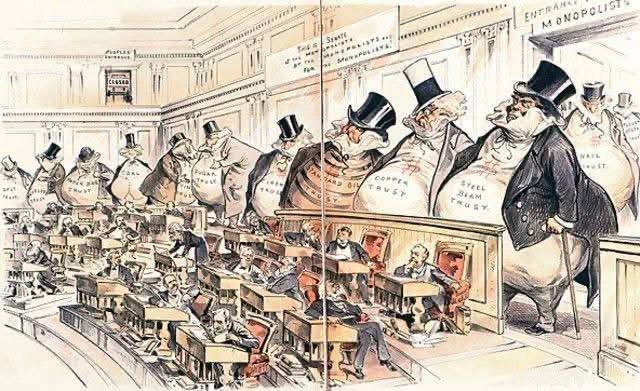รวมข่าวจากเวบ SecurityOnline
#รวมข่าวIT #20260107 #securityonline
NVIDIA เปิดตัว G‑SYNC Pulsar และ DLSS 4.5: ก้าวกระโดดสู่ภาพลื่นระดับ 1000Hz
NVIDIA เผยโฉมเทคโนโลยี G‑SYNC Pulsar ที่ยกระดับความคมชัดของภาพเคลื่อนไหวให้เทียบเท่าจอ 1000Hz ผ่านเทคนิค Rolling Scan และระบบควบคุมแสงแบบอัจฉริยะ พร้อมเปิดตัว DLSS 4.5 ที่เพิ่มเฟรมเรตได้สูงสุด 6 เท่าและลดปัญหา ghosting อย่างเห็นผล รวมถึงโชว์การใช้งาน ACE AI Assistant ในเกมจริงครั้งแรก ทำให้การเล่นเกมยุคใหม่ทั้งลื่น คม และฉลาดขึ้นอย่างชัดเจน
https://securityonline.info/the-1000hz-illusion-nvidia-unveils-g-sync-pulsar-and-dlss-4-5-at-ces-2026
Qualcomm เปิดตัว Agentic AI และแพลตฟอร์ม Dual‑Elite: สมองกลางของรถยนต์ยุคใหม่
Qualcomm ประกาศความร่วมมือเชิงลึกกับ Google พร้อมเปิดตัวสถาปัตยกรรม Agentic AI และคอนโทรลเลอร์แบบ Dual Snapdragon Elite ที่รวมสมองกลรถยนต์ทุกระบบไว้ในศูนย์กลางเดียว รองรับทั้งจอหลายชุด กล้องจำนวนมาก และระบบขับขี่อัตโนมัติระดับสูง โดยมี Leapmotor และ Toyota เป็นพันธมิตรรายแรก ๆ ที่นำเทคโนโลยีนี้ไปใช้ ซึ่งสะท้อนการเปลี่ยนผ่านสู่รถยนต์ที่คิด วิเคราะห์ และตอบสนองได้อย่างชาญฉลาดมากขึ้น
https://securityonline.info/the-central-brain-qualcomm-unveils-agentic-ai-and-dual-elite-platforms-at-ces-2026
Boston Dynamics จับมือ Google DeepMind สร้าง Atlas รุ่นใหม่ที่ทั้ง “คิดเป็นและเคลื่อนไหวเหนือมนุษย์”
Boston Dynamics และ Google DeepMind ผนึกกำลังนำโมเดล Gemini Robotics มาเสริมสมองให้หุ่นยนต์ Atlas รุ่นใหม่ที่มีความแข็งแรงระดับยกของ 50 กก. พร้อมความสามารถด้านการรับรู้และเหตุผลขั้นสูง โดย Hyundai เตรียมนำไปทดสอบในสายการผลิตจริงภายในปีนี้ เป้าหมายคือหุ่นยนต์ที่ทั้งคล่องตัวและฉลาดพอสำหรับงานอุตสาหกรรมในอนาคตอันใกล้
https://securityonline.info/brain-meets-brawn-boston-dynamics-and-google-deepmind-unite-for-the-new-atlas
“รถยนต์ 10 ปี” ของ Qualcomm x Google: ยุคใหม่ของรถที่อัปเดตได้เหมือนสมาร์ตโฟน
Qualcomm และ Google เดินหน้าสร้างมาตรฐานใหม่ของรถยนต์แบบ Software‑Defined Vehicle ผ่านการผสาน Snapdragon Digital Chassis เข้ากับ Android Automotive OS และระบบคลาวด์ของ Google ทำให้รถสามารถอัปเดตฟีเจอร์ได้ยาวนานถึง 10 ปี รองรับ AI ผู้ช่วยในรถแบบเรียลไทม์ และเปิดให้พัฒนาแอปบน vSoC ผ่านคลาวด์โดยไม่ต้องใช้ฮาร์ดแวร์จริง ถือเป็นก้าวสำคัญสู่รถยนต์ที่ฉลาดขึ้นเรื่อย ๆ ตามอายุการใช้งาน
https://securityonline.info/the-ten-year-car-qualcomm-and-google-unveil-the-future-of-ai-powered-mobility
MediaTek เปิดตัว Filogic 8000: ชิป Wi‑Fi 8 ที่เน้นความเสถียรมากกว่าความเร็ว
MediaTek เปิดตัวแพลตฟอร์ม Wi‑Fi 8 Filogic 8000 ที่ออกแบบมาเพื่อรองรับสภาพแวดล้อมที่มีอุปกรณ์หนาแน่นและงาน AI‑intensive โดยเน้นความเสถียร ความหน่วงต่ำ และประสิทธิภาพการใช้งานจริงมากกว่าความเร็วสูงสุด ด้วยเทคโนโลยี Multi‑AP Coordination, Spectral Efficiency และ Long‑Range Enhancement ทำให้เหมาะกับบ้านอัจฉริยะ องค์กร และอุปกรณ์ยุคใหม่ที่ต้องการการเชื่อมต่อที่ไม่สะดุดแม้ในพื้นที่แออัด
https://securityonline.info/reliability-over-speed-mediatek-debuts-filogic-8000-to-power-the-wi-fi-8-revolution
Google อุดช่องโหว่ WebView รุนแรงใน Chrome 143
Google ปล่อยอัปเดตความปลอดภัยครั้งสำคัญให้ Chrome เวอร์ชัน 143 เพื่อแก้ไขช่องโหว่ระดับรุนแรง CVE-2026-0628 ซึ่งเกิดจากการบังคับใช้นโยบายใน WebView ไม่เพียงพอ ทำให้ผู้โจมตีอาจหลุดออกจาก sandbox และเลี่ยงข้อจำกัดด้านความปลอดภัยได้ โดยช่องโหว่นี้ถูกรายงานตั้งแต่ปลายปี 2025 และ Google จำกัดการเปิดเผยรายละเอียดจนกว่าผู้ใช้ส่วนใหญ่จะอัปเดตเพื่อป้องกันการย้อนรอยโจมตี
https://securityonline.info/google-patches-high-severity-webview-flaw-in-chrome-143
ช่องโหว่ Forcepoint DLP เปิดทางรันโค้ดผ่าน Python ที่ถูกจำกัด
พบช่องโหว่ CVE-2025-14026 ใน Forcepoint One DLP Client ที่ทำให้ผู้โจมตีสามารถกู้คืนความสามารถของ Python ที่ถูกจำกัดไว้ และโหลด ctypes กลับมาใช้งานเพื่อรันโค้ดอันตรายได้ ส่งผลให้สามารถปิดระบบป้องกันข้อมูลหรือดัดแปลงพฤติกรรมของไคลเอนต์ได้ โดย Forcepoint แก้ปัญหาด้วยการลบ Python runtime ออกจากเวอร์ชันใหม่ทั้งหมด
https://securityonline.info/cve-2025-14026-forcepoint-dlp-flaw-lets-attackers-unchain-restricted-python
แคมเปญ PHALT#BLYX หลอกโรงแรมด้วย BSOD ปลอมเพื่อติดตั้ง DCRat
แคมเปญโจมตี PHALT#BLYX ใช้การหลอกลวงแบบ “click-fix” ผ่านอีเมลปลอมจาก Booking.com พาเหยื่อไปหน้า CAPTCHA ปลอมที่นำไปสู่ Blue Screen ปลอม ก่อนหลอกให้รัน PowerShell เพื่อติดตั้งมัลแวร์ DCRat และ AsyncRAT โดยใช้เครื่องมือ Windows จริงเพื่อหลบการตรวจจับ พร้อมพบร่องรอยเชื่อมโยงกลุ่มผู้โจมตีที่ใช้ภาษารัสเซีย
https://securityonline.info/the-clickfix-trap-phaltblyx-targets-hotels-with-fake-blue-screens-and-dcrat
Utility ชื่อดังในจีนถูกแอบฝังปลั๊กอิน Mltab เพื่อดักข้อมูลเบราว์เซอร์
เครื่องมือ Office Assistant ที่นิยมในจีนถูกพบว่าถูกฝังโค้ดอันตรายตั้งแต่ปี 2024 โดยโหลดปลั๊กอิน Mltab ที่มีลายเซ็นดิจิทัลปลอมเพื่อดักข้อมูลผู้ใช้และเปลี่ยนเส้นทางทราฟฟิก รวมถึงแก้ไขหน้า New Tab และลิงก์ต่าง ๆ เพื่อสร้างรายได้จากการรีไดเรกต์ โดยมีผู้ติดเชื้อเกือบหนึ่งล้านเครื่อง และปลั๊กอินยังคงอยู่ใน Edge Add-on Store ในช่วงเวลาที่รายงาน
https://securityonline.info/popular-chinese-utility-hijacked-to-deploy-browser-malware
ช่องโหว่ Dify ทำ API Key หลุดแบบ plaintext ให้ผู้ใช้ทั่วไปเห็นได้
แพลตฟอร์มโอเพ่นซอร์ส Dify พบช่องโหว่ CVE-2025-67732 ที่ทำให้ API key ของผู้ให้บริการโมเดล เช่น OpenAI ถูกส่งกลับไปยัง frontend แบบไม่ปิดบัง ทำให้ผู้ใช้ที่ไม่ใช่แอดมินสามารถดึงคีย์ไปใช้สร้างค่าใช้จ่ายหรือเข้าถึงบริการโดยไม่ได้รับอนุญาต ทีมพัฒนาได้แก้ไขแล้วในเวอร์ชัน 1.11.0 และแนะนำให้อัปเดตทันที
https://securityonline.info/cve-2025-67732-dify-patch-fixes-high-severity-plaintext-api-key-exposure
wolfSSH พบช่องโหว่ตรรกะร้ายแรงทำรหัสผ่านลูกค้ารั่วแบบไม่เข้ารหัส
รายงานเตือนภัยล่าสุดเผยว่า wolfSSH มีช่องโหว่ด้านตรรกะที่ทำให้รหัสผ่านของผู้ใช้ถูกส่งแบบข้อความล้วน ซึ่งอาจถูกดักจับได้ง่ายในสภาพแวดล้อมเครือข่ายที่ไม่ปลอดภัย โดยช่องโหว่นี้กระทบระบบที่ใช้ SCP/SSH และอุปกรณ์ embedded หลายประเภท ทำให้ผู้ดูแลระบบจำเป็นต้องตรวจสอบการใช้งานและอัปเดตการตั้งค่าความปลอดภัยทันทีเพื่อป้องกันความเสี่ยงที่อาจเกิดขึ้นจากการโจมตีแบบดักฟังหรือสอดแนมข้อมูลสำคัญขององค์กร
https://securityonline.info/wolfssh-alert-critical-logic-flaw-exposes-client-passwords-in-clear-text
Microsoft เตือนภัยการปลอมโดเมนภายในพุ่งสูง ใช้ช่องโหว่การตั้งค่าอีเมล
Microsoft รายงานว่ามีการโจมตีฟิชชิงรูปแบบใหม่ที่ปลอมอีเมลให้เหมือนส่งมาจากภายในองค์กร โดยอาศัยการตั้งค่า MX และ DMARC ที่ผิดพลาดในระบบที่ไม่ได้ชี้ตรงไปยัง Office 365 ทำให้ผู้โจมตีสามารถส่งอีเมลปลอมที่ดูน่าเชื่อถือมาก พร้อมแนบไฟล์ปลอม เช่น ใบแจ้งหนี้หรือเอกสารภาษี เพื่อหลอกให้เหยื่อโอนเงินหรือกรอกข้อมูลสำคัญ ซึ่ง Microsoft แนะนำให้องค์กรตั้งค่า DMARC แบบ reject และ SPF แบบ hard fail เพื่อปิดช่องโหว่นี้ทันที
https://securityonline.info/microsoft-warns-of-surge-in-internal-domain-spoofing
ช่องโหว่ RCE ร้ายแรงโจมตีเราเตอร์ D-Link รุ่นเก่า แก้ไขไม่ได้อีกต่อไป
พบช่องโหว่ CVE-2026-0625 ที่เปิดให้ผู้โจมตีสามารถสั่งรันโค้ดจากระยะไกลบนเราเตอร์ D-Link รุ่นเก่าที่หมดอายุซัพพอร์ตแล้ว โดยเกิดจากการตรวจสอบข้อมูลใน dnscfg.cgi ที่ไม่รัดกุม ทำให้ผู้โจมตีสามารถส่งคำสั่งระบบได้โดยไม่ต้องล็อกอิน และมีรายงานว่าถูกใช้โจมตีจริงตั้งแต่ปลายปี 2025 ทำให้ผู้ใช้จำเป็นต้องเปลี่ยนอุปกรณ์ใหม่เท่านั้นเพราะไม่มีแพตช์แก้ไขใด ๆ อีกต่อไป
https://securityonline.info/cve-2026-0625-critical-actively-exploited-rce-hits-unpatchable-d-link-routers
TOTOLINK EX200 เปิด Telnet root เองเมื่ออัปเดตเฟิร์มแวร์ผิดพลาด
ช่องโหว่ CVE-2025-65606 ถูกพบใน TOTOLINK EX200 ซึ่งเมื่ออัปโหลดไฟล์เฟิร์มแวร์ที่ผิดรูปแบบ อุปกรณ์จะเข้าสู่โหมดผิดปกติและเปิดบริการ Telnet ด้วยสิทธิ์ root โดยไม่ต้องยืนยันตัวตน ทำให้ผู้โจมตีที่เข้าถึงหน้าเว็บจัดการได้สามารถยกระดับสิทธิ์เป็นผู้ควบคุมระบบเต็มรูปแบบ และเนื่องจากอุปกรณ์หมดอายุซัพพอร์ตแล้ว ผู้ใช้ควรเลิกใช้งานหรือแยกเครือข่ายอย่างเข้มงวดทันทีเพื่อหลีกเลี่ยงความเสี่ยงร้ายแรง
https://securityonline.info/cve-2025-65606-totolink-ex200-error-opens-root-telnet-door
n8n พบช่องโหว่ CVSS 10.0 เปิดทางยึดระบบเต็มรูปแบบผ่านการเขียนไฟล์
แพลตฟอร์ม workflow automation อย่าง n8n ประกาศเตือนช่องโหว่ร้ายแรง CVE-2026-21877 ที่เปิดให้ผู้ใช้ที่ผ่านการยืนยันตัวตนสามารถเขียนไฟล์อันตรายลงระบบและสั่งรันโค้ดได้ ทำให้ผู้โจมตีสามารถยึดระบบทั้งเซิร์ฟเวอร์ได้ทันที โดยคาดว่าช่องโหว่มาจากฟีเจอร์ Git node ซึ่งแนะนำให้ปิดการใช้งานชั่วคราวหากยังไม่สามารถอัปเดตเป็นเวอร์ชัน 1.121.3 หรือใหม่กว่าได้ เพื่อป้องกันความเสียหายที่อาจเกิดขึ้นในสภาพแวดล้อมที่มีผู้ใช้หลายคนร่วมกัน
https://securityonline.info/cvss-10-0-alert-critical-n8n-flaw-cve-2026-21877-grants-total-control
#รวมข่าวIT #20260107 #securityonline
NVIDIA เปิดตัว G‑SYNC Pulsar และ DLSS 4.5: ก้าวกระโดดสู่ภาพลื่นระดับ 1000Hz
NVIDIA เผยโฉมเทคโนโลยี G‑SYNC Pulsar ที่ยกระดับความคมชัดของภาพเคลื่อนไหวให้เทียบเท่าจอ 1000Hz ผ่านเทคนิค Rolling Scan และระบบควบคุมแสงแบบอัจฉริยะ พร้อมเปิดตัว DLSS 4.5 ที่เพิ่มเฟรมเรตได้สูงสุด 6 เท่าและลดปัญหา ghosting อย่างเห็นผล รวมถึงโชว์การใช้งาน ACE AI Assistant ในเกมจริงครั้งแรก ทำให้การเล่นเกมยุคใหม่ทั้งลื่น คม และฉลาดขึ้นอย่างชัดเจน
https://securityonline.info/the-1000hz-illusion-nvidia-unveils-g-sync-pulsar-and-dlss-4-5-at-ces-2026
Qualcomm เปิดตัว Agentic AI และแพลตฟอร์ม Dual‑Elite: สมองกลางของรถยนต์ยุคใหม่
Qualcomm ประกาศความร่วมมือเชิงลึกกับ Google พร้อมเปิดตัวสถาปัตยกรรม Agentic AI และคอนโทรลเลอร์แบบ Dual Snapdragon Elite ที่รวมสมองกลรถยนต์ทุกระบบไว้ในศูนย์กลางเดียว รองรับทั้งจอหลายชุด กล้องจำนวนมาก และระบบขับขี่อัตโนมัติระดับสูง โดยมี Leapmotor และ Toyota เป็นพันธมิตรรายแรก ๆ ที่นำเทคโนโลยีนี้ไปใช้ ซึ่งสะท้อนการเปลี่ยนผ่านสู่รถยนต์ที่คิด วิเคราะห์ และตอบสนองได้อย่างชาญฉลาดมากขึ้น
https://securityonline.info/the-central-brain-qualcomm-unveils-agentic-ai-and-dual-elite-platforms-at-ces-2026
Boston Dynamics จับมือ Google DeepMind สร้าง Atlas รุ่นใหม่ที่ทั้ง “คิดเป็นและเคลื่อนไหวเหนือมนุษย์”
Boston Dynamics และ Google DeepMind ผนึกกำลังนำโมเดล Gemini Robotics มาเสริมสมองให้หุ่นยนต์ Atlas รุ่นใหม่ที่มีความแข็งแรงระดับยกของ 50 กก. พร้อมความสามารถด้านการรับรู้และเหตุผลขั้นสูง โดย Hyundai เตรียมนำไปทดสอบในสายการผลิตจริงภายในปีนี้ เป้าหมายคือหุ่นยนต์ที่ทั้งคล่องตัวและฉลาดพอสำหรับงานอุตสาหกรรมในอนาคตอันใกล้
https://securityonline.info/brain-meets-brawn-boston-dynamics-and-google-deepmind-unite-for-the-new-atlas
“รถยนต์ 10 ปี” ของ Qualcomm x Google: ยุคใหม่ของรถที่อัปเดตได้เหมือนสมาร์ตโฟน
Qualcomm และ Google เดินหน้าสร้างมาตรฐานใหม่ของรถยนต์แบบ Software‑Defined Vehicle ผ่านการผสาน Snapdragon Digital Chassis เข้ากับ Android Automotive OS และระบบคลาวด์ของ Google ทำให้รถสามารถอัปเดตฟีเจอร์ได้ยาวนานถึง 10 ปี รองรับ AI ผู้ช่วยในรถแบบเรียลไทม์ และเปิดให้พัฒนาแอปบน vSoC ผ่านคลาวด์โดยไม่ต้องใช้ฮาร์ดแวร์จริง ถือเป็นก้าวสำคัญสู่รถยนต์ที่ฉลาดขึ้นเรื่อย ๆ ตามอายุการใช้งาน
https://securityonline.info/the-ten-year-car-qualcomm-and-google-unveil-the-future-of-ai-powered-mobility
MediaTek เปิดตัว Filogic 8000: ชิป Wi‑Fi 8 ที่เน้นความเสถียรมากกว่าความเร็ว
MediaTek เปิดตัวแพลตฟอร์ม Wi‑Fi 8 Filogic 8000 ที่ออกแบบมาเพื่อรองรับสภาพแวดล้อมที่มีอุปกรณ์หนาแน่นและงาน AI‑intensive โดยเน้นความเสถียร ความหน่วงต่ำ และประสิทธิภาพการใช้งานจริงมากกว่าความเร็วสูงสุด ด้วยเทคโนโลยี Multi‑AP Coordination, Spectral Efficiency และ Long‑Range Enhancement ทำให้เหมาะกับบ้านอัจฉริยะ องค์กร และอุปกรณ์ยุคใหม่ที่ต้องการการเชื่อมต่อที่ไม่สะดุดแม้ในพื้นที่แออัด
https://securityonline.info/reliability-over-speed-mediatek-debuts-filogic-8000-to-power-the-wi-fi-8-revolution
Google อุดช่องโหว่ WebView รุนแรงใน Chrome 143
Google ปล่อยอัปเดตความปลอดภัยครั้งสำคัญให้ Chrome เวอร์ชัน 143 เพื่อแก้ไขช่องโหว่ระดับรุนแรง CVE-2026-0628 ซึ่งเกิดจากการบังคับใช้นโยบายใน WebView ไม่เพียงพอ ทำให้ผู้โจมตีอาจหลุดออกจาก sandbox และเลี่ยงข้อจำกัดด้านความปลอดภัยได้ โดยช่องโหว่นี้ถูกรายงานตั้งแต่ปลายปี 2025 และ Google จำกัดการเปิดเผยรายละเอียดจนกว่าผู้ใช้ส่วนใหญ่จะอัปเดตเพื่อป้องกันการย้อนรอยโจมตี
https://securityonline.info/google-patches-high-severity-webview-flaw-in-chrome-143
ช่องโหว่ Forcepoint DLP เปิดทางรันโค้ดผ่าน Python ที่ถูกจำกัด
พบช่องโหว่ CVE-2025-14026 ใน Forcepoint One DLP Client ที่ทำให้ผู้โจมตีสามารถกู้คืนความสามารถของ Python ที่ถูกจำกัดไว้ และโหลด ctypes กลับมาใช้งานเพื่อรันโค้ดอันตรายได้ ส่งผลให้สามารถปิดระบบป้องกันข้อมูลหรือดัดแปลงพฤติกรรมของไคลเอนต์ได้ โดย Forcepoint แก้ปัญหาด้วยการลบ Python runtime ออกจากเวอร์ชันใหม่ทั้งหมด
https://securityonline.info/cve-2025-14026-forcepoint-dlp-flaw-lets-attackers-unchain-restricted-python
แคมเปญ PHALT#BLYX หลอกโรงแรมด้วย BSOD ปลอมเพื่อติดตั้ง DCRat
แคมเปญโจมตี PHALT#BLYX ใช้การหลอกลวงแบบ “click-fix” ผ่านอีเมลปลอมจาก Booking.com พาเหยื่อไปหน้า CAPTCHA ปลอมที่นำไปสู่ Blue Screen ปลอม ก่อนหลอกให้รัน PowerShell เพื่อติดตั้งมัลแวร์ DCRat และ AsyncRAT โดยใช้เครื่องมือ Windows จริงเพื่อหลบการตรวจจับ พร้อมพบร่องรอยเชื่อมโยงกลุ่มผู้โจมตีที่ใช้ภาษารัสเซีย
https://securityonline.info/the-clickfix-trap-phaltblyx-targets-hotels-with-fake-blue-screens-and-dcrat
Utility ชื่อดังในจีนถูกแอบฝังปลั๊กอิน Mltab เพื่อดักข้อมูลเบราว์เซอร์
เครื่องมือ Office Assistant ที่นิยมในจีนถูกพบว่าถูกฝังโค้ดอันตรายตั้งแต่ปี 2024 โดยโหลดปลั๊กอิน Mltab ที่มีลายเซ็นดิจิทัลปลอมเพื่อดักข้อมูลผู้ใช้และเปลี่ยนเส้นทางทราฟฟิก รวมถึงแก้ไขหน้า New Tab และลิงก์ต่าง ๆ เพื่อสร้างรายได้จากการรีไดเรกต์ โดยมีผู้ติดเชื้อเกือบหนึ่งล้านเครื่อง และปลั๊กอินยังคงอยู่ใน Edge Add-on Store ในช่วงเวลาที่รายงาน
https://securityonline.info/popular-chinese-utility-hijacked-to-deploy-browser-malware
ช่องโหว่ Dify ทำ API Key หลุดแบบ plaintext ให้ผู้ใช้ทั่วไปเห็นได้
แพลตฟอร์มโอเพ่นซอร์ส Dify พบช่องโหว่ CVE-2025-67732 ที่ทำให้ API key ของผู้ให้บริการโมเดล เช่น OpenAI ถูกส่งกลับไปยัง frontend แบบไม่ปิดบัง ทำให้ผู้ใช้ที่ไม่ใช่แอดมินสามารถดึงคีย์ไปใช้สร้างค่าใช้จ่ายหรือเข้าถึงบริการโดยไม่ได้รับอนุญาต ทีมพัฒนาได้แก้ไขแล้วในเวอร์ชัน 1.11.0 และแนะนำให้อัปเดตทันที
https://securityonline.info/cve-2025-67732-dify-patch-fixes-high-severity-plaintext-api-key-exposure
wolfSSH พบช่องโหว่ตรรกะร้ายแรงทำรหัสผ่านลูกค้ารั่วแบบไม่เข้ารหัส
รายงานเตือนภัยล่าสุดเผยว่า wolfSSH มีช่องโหว่ด้านตรรกะที่ทำให้รหัสผ่านของผู้ใช้ถูกส่งแบบข้อความล้วน ซึ่งอาจถูกดักจับได้ง่ายในสภาพแวดล้อมเครือข่ายที่ไม่ปลอดภัย โดยช่องโหว่นี้กระทบระบบที่ใช้ SCP/SSH และอุปกรณ์ embedded หลายประเภท ทำให้ผู้ดูแลระบบจำเป็นต้องตรวจสอบการใช้งานและอัปเดตการตั้งค่าความปลอดภัยทันทีเพื่อป้องกันความเสี่ยงที่อาจเกิดขึ้นจากการโจมตีแบบดักฟังหรือสอดแนมข้อมูลสำคัญขององค์กร
https://securityonline.info/wolfssh-alert-critical-logic-flaw-exposes-client-passwords-in-clear-text
Microsoft เตือนภัยการปลอมโดเมนภายในพุ่งสูง ใช้ช่องโหว่การตั้งค่าอีเมล
Microsoft รายงานว่ามีการโจมตีฟิชชิงรูปแบบใหม่ที่ปลอมอีเมลให้เหมือนส่งมาจากภายในองค์กร โดยอาศัยการตั้งค่า MX และ DMARC ที่ผิดพลาดในระบบที่ไม่ได้ชี้ตรงไปยัง Office 365 ทำให้ผู้โจมตีสามารถส่งอีเมลปลอมที่ดูน่าเชื่อถือมาก พร้อมแนบไฟล์ปลอม เช่น ใบแจ้งหนี้หรือเอกสารภาษี เพื่อหลอกให้เหยื่อโอนเงินหรือกรอกข้อมูลสำคัญ ซึ่ง Microsoft แนะนำให้องค์กรตั้งค่า DMARC แบบ reject และ SPF แบบ hard fail เพื่อปิดช่องโหว่นี้ทันที
https://securityonline.info/microsoft-warns-of-surge-in-internal-domain-spoofing
ช่องโหว่ RCE ร้ายแรงโจมตีเราเตอร์ D-Link รุ่นเก่า แก้ไขไม่ได้อีกต่อไป
พบช่องโหว่ CVE-2026-0625 ที่เปิดให้ผู้โจมตีสามารถสั่งรันโค้ดจากระยะไกลบนเราเตอร์ D-Link รุ่นเก่าที่หมดอายุซัพพอร์ตแล้ว โดยเกิดจากการตรวจสอบข้อมูลใน dnscfg.cgi ที่ไม่รัดกุม ทำให้ผู้โจมตีสามารถส่งคำสั่งระบบได้โดยไม่ต้องล็อกอิน และมีรายงานว่าถูกใช้โจมตีจริงตั้งแต่ปลายปี 2025 ทำให้ผู้ใช้จำเป็นต้องเปลี่ยนอุปกรณ์ใหม่เท่านั้นเพราะไม่มีแพตช์แก้ไขใด ๆ อีกต่อไป
https://securityonline.info/cve-2026-0625-critical-actively-exploited-rce-hits-unpatchable-d-link-routers
TOTOLINK EX200 เปิด Telnet root เองเมื่ออัปเดตเฟิร์มแวร์ผิดพลาด
ช่องโหว่ CVE-2025-65606 ถูกพบใน TOTOLINK EX200 ซึ่งเมื่ออัปโหลดไฟล์เฟิร์มแวร์ที่ผิดรูปแบบ อุปกรณ์จะเข้าสู่โหมดผิดปกติและเปิดบริการ Telnet ด้วยสิทธิ์ root โดยไม่ต้องยืนยันตัวตน ทำให้ผู้โจมตีที่เข้าถึงหน้าเว็บจัดการได้สามารถยกระดับสิทธิ์เป็นผู้ควบคุมระบบเต็มรูปแบบ และเนื่องจากอุปกรณ์หมดอายุซัพพอร์ตแล้ว ผู้ใช้ควรเลิกใช้งานหรือแยกเครือข่ายอย่างเข้มงวดทันทีเพื่อหลีกเลี่ยงความเสี่ยงร้ายแรง
https://securityonline.info/cve-2025-65606-totolink-ex200-error-opens-root-telnet-door
n8n พบช่องโหว่ CVSS 10.0 เปิดทางยึดระบบเต็มรูปแบบผ่านการเขียนไฟล์
แพลตฟอร์ม workflow automation อย่าง n8n ประกาศเตือนช่องโหว่ร้ายแรง CVE-2026-21877 ที่เปิดให้ผู้ใช้ที่ผ่านการยืนยันตัวตนสามารถเขียนไฟล์อันตรายลงระบบและสั่งรันโค้ดได้ ทำให้ผู้โจมตีสามารถยึดระบบทั้งเซิร์ฟเวอร์ได้ทันที โดยคาดว่าช่องโหว่มาจากฟีเจอร์ Git node ซึ่งแนะนำให้ปิดการใช้งานชั่วคราวหากยังไม่สามารถอัปเดตเป็นเวอร์ชัน 1.121.3 หรือใหม่กว่าได้ เพื่อป้องกันความเสียหายที่อาจเกิดขึ้นในสภาพแวดล้อมที่มีผู้ใช้หลายคนร่วมกัน
https://securityonline.info/cvss-10-0-alert-critical-n8n-flaw-cve-2026-21877-grants-total-control
📌🔐🟢 รวมข่าวจากเวบ SecurityOnline 🟢🔐📌
#รวมข่าวIT #20260107 #securityonline
⚡ NVIDIA เปิดตัว G‑SYNC Pulsar และ DLSS 4.5: ก้าวกระโดดสู่ภาพลื่นระดับ 1000Hz
NVIDIA เผยโฉมเทคโนโลยี G‑SYNC Pulsar ที่ยกระดับความคมชัดของภาพเคลื่อนไหวให้เทียบเท่าจอ 1000Hz ผ่านเทคนิค Rolling Scan และระบบควบคุมแสงแบบอัจฉริยะ พร้อมเปิดตัว DLSS 4.5 ที่เพิ่มเฟรมเรตได้สูงสุด 6 เท่าและลดปัญหา ghosting อย่างเห็นผล รวมถึงโชว์การใช้งาน ACE AI Assistant ในเกมจริงครั้งแรก ทำให้การเล่นเกมยุคใหม่ทั้งลื่น คม และฉลาดขึ้นอย่างชัดเจน
🔗 https://securityonline.info/the-1000hz-illusion-nvidia-unveils-g-sync-pulsar-and-dlss-4-5-at-ces-2026
🚗🧠 Qualcomm เปิดตัว Agentic AI และแพลตฟอร์ม Dual‑Elite: สมองกลางของรถยนต์ยุคใหม่
Qualcomm ประกาศความร่วมมือเชิงลึกกับ Google พร้อมเปิดตัวสถาปัตยกรรม Agentic AI และคอนโทรลเลอร์แบบ Dual Snapdragon Elite ที่รวมสมองกลรถยนต์ทุกระบบไว้ในศูนย์กลางเดียว รองรับทั้งจอหลายชุด กล้องจำนวนมาก และระบบขับขี่อัตโนมัติระดับสูง โดยมี Leapmotor และ Toyota เป็นพันธมิตรรายแรก ๆ ที่นำเทคโนโลยีนี้ไปใช้ ซึ่งสะท้อนการเปลี่ยนผ่านสู่รถยนต์ที่คิด วิเคราะห์ และตอบสนองได้อย่างชาญฉลาดมากขึ้น
🔗 https://securityonline.info/the-central-brain-qualcomm-unveils-agentic-ai-and-dual-elite-platforms-at-ces-2026
🤖✨ Boston Dynamics จับมือ Google DeepMind สร้าง Atlas รุ่นใหม่ที่ทั้ง “คิดเป็นและเคลื่อนไหวเหนือมนุษย์”
Boston Dynamics และ Google DeepMind ผนึกกำลังนำโมเดล Gemini Robotics มาเสริมสมองให้หุ่นยนต์ Atlas รุ่นใหม่ที่มีความแข็งแรงระดับยกของ 50 กก. พร้อมความสามารถด้านการรับรู้และเหตุผลขั้นสูง โดย Hyundai เตรียมนำไปทดสอบในสายการผลิตจริงภายในปีนี้ เป้าหมายคือหุ่นยนต์ที่ทั้งคล่องตัวและฉลาดพอสำหรับงานอุตสาหกรรมในอนาคตอันใกล้
🔗 https://securityonline.info/brain-meets-brawn-boston-dynamics-and-google-deepmind-unite-for-the-new-atlas
🚘🌐 “รถยนต์ 10 ปี” ของ Qualcomm x Google: ยุคใหม่ของรถที่อัปเดตได้เหมือนสมาร์ตโฟน
Qualcomm และ Google เดินหน้าสร้างมาตรฐานใหม่ของรถยนต์แบบ Software‑Defined Vehicle ผ่านการผสาน Snapdragon Digital Chassis เข้ากับ Android Automotive OS และระบบคลาวด์ของ Google ทำให้รถสามารถอัปเดตฟีเจอร์ได้ยาวนานถึง 10 ปี รองรับ AI ผู้ช่วยในรถแบบเรียลไทม์ และเปิดให้พัฒนาแอปบน vSoC ผ่านคลาวด์โดยไม่ต้องใช้ฮาร์ดแวร์จริง ถือเป็นก้าวสำคัญสู่รถยนต์ที่ฉลาดขึ้นเรื่อย ๆ ตามอายุการใช้งาน
🔗 https://securityonline.info/the-ten-year-car-qualcomm-and-google-unveil-the-future-of-ai-powered-mobility
📶🚀 MediaTek เปิดตัว Filogic 8000: ชิป Wi‑Fi 8 ที่เน้นความเสถียรมากกว่าความเร็ว
MediaTek เปิดตัวแพลตฟอร์ม Wi‑Fi 8 Filogic 8000 ที่ออกแบบมาเพื่อรองรับสภาพแวดล้อมที่มีอุปกรณ์หนาแน่นและงาน AI‑intensive โดยเน้นความเสถียร ความหน่วงต่ำ และประสิทธิภาพการใช้งานจริงมากกว่าความเร็วสูงสุด ด้วยเทคโนโลยี Multi‑AP Coordination, Spectral Efficiency และ Long‑Range Enhancement ทำให้เหมาะกับบ้านอัจฉริยะ องค์กร และอุปกรณ์ยุคใหม่ที่ต้องการการเชื่อมต่อที่ไม่สะดุดแม้ในพื้นที่แออัด
🔗 https://securityonline.info/reliability-over-speed-mediatek-debuts-filogic-8000-to-power-the-wi-fi-8-revolution
🛡️ Google อุดช่องโหว่ WebView รุนแรงใน Chrome 143
Google ปล่อยอัปเดตความปลอดภัยครั้งสำคัญให้ Chrome เวอร์ชัน 143 เพื่อแก้ไขช่องโหว่ระดับรุนแรง CVE-2026-0628 ซึ่งเกิดจากการบังคับใช้นโยบายใน WebView ไม่เพียงพอ ทำให้ผู้โจมตีอาจหลุดออกจาก sandbox และเลี่ยงข้อจำกัดด้านความปลอดภัยได้ โดยช่องโหว่นี้ถูกรายงานตั้งแต่ปลายปี 2025 และ Google จำกัดการเปิดเผยรายละเอียดจนกว่าผู้ใช้ส่วนใหญ่จะอัปเดตเพื่อป้องกันการย้อนรอยโจมตี
🔗 https://securityonline.info/google-patches-high-severity-webview-flaw-in-chrome-143
🐍🔓 ช่องโหว่ Forcepoint DLP เปิดทางรันโค้ดผ่าน Python ที่ถูกจำกัด
พบช่องโหว่ CVE-2025-14026 ใน Forcepoint One DLP Client ที่ทำให้ผู้โจมตีสามารถกู้คืนความสามารถของ Python ที่ถูกจำกัดไว้ และโหลด ctypes กลับมาใช้งานเพื่อรันโค้ดอันตรายได้ ส่งผลให้สามารถปิดระบบป้องกันข้อมูลหรือดัดแปลงพฤติกรรมของไคลเอนต์ได้ โดย Forcepoint แก้ปัญหาด้วยการลบ Python runtime ออกจากเวอร์ชันใหม่ทั้งหมด
🔗 https://securityonline.info/cve-2025-14026-forcepoint-dlp-flaw-lets-attackers-unchain-restricted-python
🏨💀 แคมเปญ PHALT#BLYX หลอกโรงแรมด้วย BSOD ปลอมเพื่อติดตั้ง DCRat
แคมเปญโจมตี PHALT#BLYX ใช้การหลอกลวงแบบ “click-fix” ผ่านอีเมลปลอมจาก Booking.com พาเหยื่อไปหน้า CAPTCHA ปลอมที่นำไปสู่ Blue Screen ปลอม ก่อนหลอกให้รัน PowerShell เพื่อติดตั้งมัลแวร์ DCRat และ AsyncRAT โดยใช้เครื่องมือ Windows จริงเพื่อหลบการตรวจจับ พร้อมพบร่องรอยเชื่อมโยงกลุ่มผู้โจมตีที่ใช้ภาษารัสเซีย
🔗 https://securityonline.info/the-clickfix-trap-phaltblyx-targets-hotels-with-fake-blue-screens-and-dcrat
🧰🕵️♂️ Utility ชื่อดังในจีนถูกแอบฝังปลั๊กอิน Mltab เพื่อดักข้อมูลเบราว์เซอร์
เครื่องมือ Office Assistant ที่นิยมในจีนถูกพบว่าถูกฝังโค้ดอันตรายตั้งแต่ปี 2024 โดยโหลดปลั๊กอิน Mltab ที่มีลายเซ็นดิจิทัลปลอมเพื่อดักข้อมูลผู้ใช้และเปลี่ยนเส้นทางทราฟฟิก รวมถึงแก้ไขหน้า New Tab และลิงก์ต่าง ๆ เพื่อสร้างรายได้จากการรีไดเรกต์ โดยมีผู้ติดเชื้อเกือบหนึ่งล้านเครื่อง และปลั๊กอินยังคงอยู่ใน Edge Add-on Store ในช่วงเวลาที่รายงาน
🔗 https://securityonline.info/popular-chinese-utility-hijacked-to-deploy-browser-malware
🔑⚠️ ช่องโหว่ Dify ทำ API Key หลุดแบบ plaintext ให้ผู้ใช้ทั่วไปเห็นได้
แพลตฟอร์มโอเพ่นซอร์ส Dify พบช่องโหว่ CVE-2025-67732 ที่ทำให้ API key ของผู้ให้บริการโมเดล เช่น OpenAI ถูกส่งกลับไปยัง frontend แบบไม่ปิดบัง ทำให้ผู้ใช้ที่ไม่ใช่แอดมินสามารถดึงคีย์ไปใช้สร้างค่าใช้จ่ายหรือเข้าถึงบริการโดยไม่ได้รับอนุญาต ทีมพัฒนาได้แก้ไขแล้วในเวอร์ชัน 1.11.0 และแนะนำให้อัปเดตทันที
🔗 https://securityonline.info/cve-2025-67732-dify-patch-fixes-high-severity-plaintext-api-key-exposure
🔐 wolfSSH พบช่องโหว่ตรรกะร้ายแรงทำรหัสผ่านลูกค้ารั่วแบบไม่เข้ารหัส
รายงานเตือนภัยล่าสุดเผยว่า wolfSSH มีช่องโหว่ด้านตรรกะที่ทำให้รหัสผ่านของผู้ใช้ถูกส่งแบบข้อความล้วน ซึ่งอาจถูกดักจับได้ง่ายในสภาพแวดล้อมเครือข่ายที่ไม่ปลอดภัย โดยช่องโหว่นี้กระทบระบบที่ใช้ SCP/SSH และอุปกรณ์ embedded หลายประเภท ทำให้ผู้ดูแลระบบจำเป็นต้องตรวจสอบการใช้งานและอัปเดตการตั้งค่าความปลอดภัยทันทีเพื่อป้องกันความเสี่ยงที่อาจเกิดขึ้นจากการโจมตีแบบดักฟังหรือสอดแนมข้อมูลสำคัญขององค์กร
🔗 https://securityonline.info/wolfssh-alert-critical-logic-flaw-exposes-client-passwords-in-clear-text
📧 Microsoft เตือนภัยการปลอมโดเมนภายในพุ่งสูง ใช้ช่องโหว่การตั้งค่าอีเมล
Microsoft รายงานว่ามีการโจมตีฟิชชิงรูปแบบใหม่ที่ปลอมอีเมลให้เหมือนส่งมาจากภายในองค์กร โดยอาศัยการตั้งค่า MX และ DMARC ที่ผิดพลาดในระบบที่ไม่ได้ชี้ตรงไปยัง Office 365 ทำให้ผู้โจมตีสามารถส่งอีเมลปลอมที่ดูน่าเชื่อถือมาก พร้อมแนบไฟล์ปลอม เช่น ใบแจ้งหนี้หรือเอกสารภาษี เพื่อหลอกให้เหยื่อโอนเงินหรือกรอกข้อมูลสำคัญ ซึ่ง Microsoft แนะนำให้องค์กรตั้งค่า DMARC แบบ reject และ SPF แบบ hard fail เพื่อปิดช่องโหว่นี้ทันที
🔗 https://securityonline.info/microsoft-warns-of-surge-in-internal-domain-spoofing
📡 ช่องโหว่ RCE ร้ายแรงโจมตีเราเตอร์ D-Link รุ่นเก่า แก้ไขไม่ได้อีกต่อไป
พบช่องโหว่ CVE-2026-0625 ที่เปิดให้ผู้โจมตีสามารถสั่งรันโค้ดจากระยะไกลบนเราเตอร์ D-Link รุ่นเก่าที่หมดอายุซัพพอร์ตแล้ว โดยเกิดจากการตรวจสอบข้อมูลใน dnscfg.cgi ที่ไม่รัดกุม ทำให้ผู้โจมตีสามารถส่งคำสั่งระบบได้โดยไม่ต้องล็อกอิน และมีรายงานว่าถูกใช้โจมตีจริงตั้งแต่ปลายปี 2025 ทำให้ผู้ใช้จำเป็นต้องเปลี่ยนอุปกรณ์ใหม่เท่านั้นเพราะไม่มีแพตช์แก้ไขใด ๆ อีกต่อไป
🔗 https://securityonline.info/cve-2026-0625-critical-actively-exploited-rce-hits-unpatchable-d-link-routers
📶 TOTOLINK EX200 เปิด Telnet root เองเมื่ออัปเดตเฟิร์มแวร์ผิดพลาด
ช่องโหว่ CVE-2025-65606 ถูกพบใน TOTOLINK EX200 ซึ่งเมื่ออัปโหลดไฟล์เฟิร์มแวร์ที่ผิดรูปแบบ อุปกรณ์จะเข้าสู่โหมดผิดปกติและเปิดบริการ Telnet ด้วยสิทธิ์ root โดยไม่ต้องยืนยันตัวตน ทำให้ผู้โจมตีที่เข้าถึงหน้าเว็บจัดการได้สามารถยกระดับสิทธิ์เป็นผู้ควบคุมระบบเต็มรูปแบบ และเนื่องจากอุปกรณ์หมดอายุซัพพอร์ตแล้ว ผู้ใช้ควรเลิกใช้งานหรือแยกเครือข่ายอย่างเข้มงวดทันทีเพื่อหลีกเลี่ยงความเสี่ยงร้ายแรง
🔗 https://securityonline.info/cve-2025-65606-totolink-ex200-error-opens-root-telnet-door
⚠️ n8n พบช่องโหว่ CVSS 10.0 เปิดทางยึดระบบเต็มรูปแบบผ่านการเขียนไฟล์
แพลตฟอร์ม workflow automation อย่าง n8n ประกาศเตือนช่องโหว่ร้ายแรง CVE-2026-21877 ที่เปิดให้ผู้ใช้ที่ผ่านการยืนยันตัวตนสามารถเขียนไฟล์อันตรายลงระบบและสั่งรันโค้ดได้ ทำให้ผู้โจมตีสามารถยึดระบบทั้งเซิร์ฟเวอร์ได้ทันที โดยคาดว่าช่องโหว่มาจากฟีเจอร์ Git node ซึ่งแนะนำให้ปิดการใช้งานชั่วคราวหากยังไม่สามารถอัปเดตเป็นเวอร์ชัน 1.121.3 หรือใหม่กว่าได้ เพื่อป้องกันความเสียหายที่อาจเกิดขึ้นในสภาพแวดล้อมที่มีผู้ใช้หลายคนร่วมกัน
🔗 https://securityonline.info/cvss-10-0-alert-critical-n8n-flaw-cve-2026-21877-grants-total-control
0 ความคิดเห็น
0 การแบ่งปัน
1 มุมมอง
0 รีวิว











